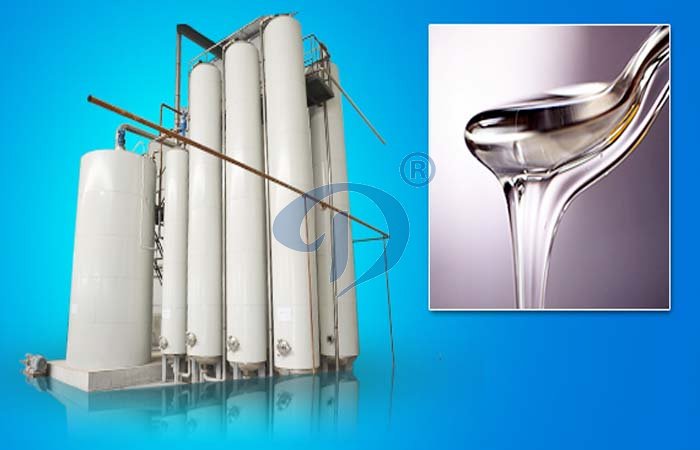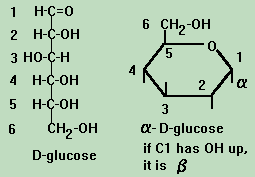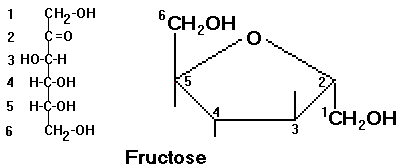
Glucose to fructose plant
First, an understanding of the forms of glucose and fructose is needed.
D-glucose looks like:

while D-fructose looks like:

The isomerization converts glucose which is not very sweet to fructose, the most sweet of the natural sugars. Syrups from this process compete with sucrose (cane sugar) in many food applications. Almost all manufacturers of soft drinks use high fructose syrups because they are less expensive than sucrose. This was devastating to world prices of cane sugar and crippled the economies of some countries.
The isomerization of glucose to fructose is part of the glycolysis cycle that converts glucose to pyruvate. The way this is done is to isomerize the aldehyde (hemiacetal) glucose to the ketone (as a hemiacetal) fructose,and make another phosphate ester. The isomerization takes advantage of the ease of breakage of a C-H bond which involves a carbon next to a carbonyl carbon. This is important in the next step which cleaves the bond between carbons three and four of fructose. It is noted that this bond involves the carbon next to the carbonyl carbon of fructose. This cleavage would not have been possible without the isomerization of glucose to fructose, because the carbonyl group of glucose is too far from carbons three and four to make that bond breakable.
Glucose isomerase (D-glucose ketoisomerase) causes the isomerization of glucose to fructose. Glucose has 70-75% the sweetening strength of beet sugar (sucrose), but fructose is twice as sweet as sucrose. Thus, processes for the manufacture of fructose are of considerable value.
Novo Industries has developed glucose isomerase from B. coagulans for commercial use. In this immobilized enzyme process, the microorganism carries out a direct isomerization of the glucose. This glucose isomerase is primarily a xylose isomerase, so xylose, or a xylose-containing compound must be added for the induction of the enzyme.
In batch processes, B. coagulans does not form the enzyme during the log phase. So, as soon as the glucose concentration in the nutrient solution approaches zero, growth ceases. Additional carbon sources present in the medium are then metabolized, and enzyme production begins. Enzyme activity is at a maximum about 24 hours after incubation.
In wild strains of B. coagulans, both cobalt and magnesium are required for maximum enzyme
production, but mutants have been isolated that don't require cobalt. Either yeast extract or corn steep liquor can be used as the nitrogen source; this choice is vital for the yield, and the concentration must be optimized for the specific process at hand. Because it is often difficult to standardize the nitrogen source, the fermentation yield may vary considerably from batch to batch.
In a continuous fermentation process, the growth-limiting substrate must be glucose. For optimal enzyme yields, oxygen limitation is also necessary since microaerophillic conditions inside the cells stabilize the system.
The commercial process for production of fructose from glucose became feasible only when procedures for immobilization of the enzyme were developed, so that the same batch of enzymes could be used repeatedly. Since glucose isomerase is formed intracellularly in most strains, many commercial processes are carried out with immobilized cells or by the addition of partly broken cells.
Our company can supply the complete set fructose syrup production plant from corn , rice or starch . If you interested in the fructose production , please contact with us freely .




 Call us
Call us Chat online
Chat online

